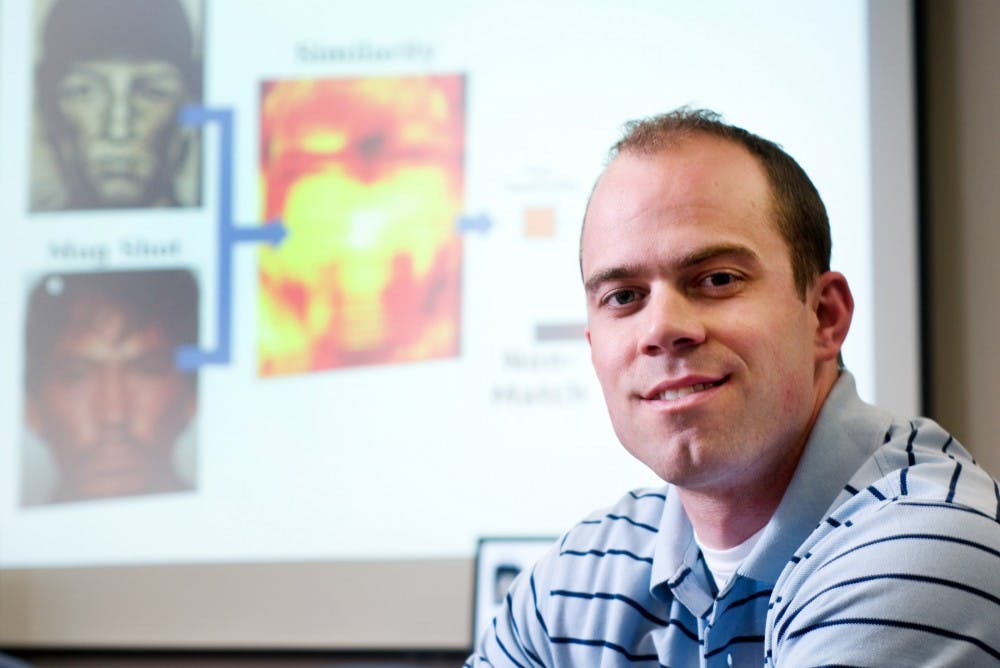Since the days when “Wanted” posters graced the bulletin boards of saloons in the Old West, police have relied on forensic sketches and mug shots to track down potential suspects of crimes.
For Brendan Klare, creating a face recognition system to match sketches to mug shots could be a significant tool in the world of law enforcement.
“When you look at forensic sketches, they’ve been used for 100 years (dating back to) Jack the Ripper,” said Klare, who is a computer science doctoral student at MSU.
“To potentially augment that system, it’s humbling to think of.”
Klare, along with Anil K. Jain, has developed software to match hand-drawn sketches of criminals to mug shots stored in the law enforcement database.
The system would allow the user to input a forensic sketch and it recognizes facial features to link it to a matching mug shot in the database. Klare said the system also allows for the user to focus on specific features of the face defined more important than others by a victim to ensure greater accuracy.
He came to MSU in summer 2008 after earning an undergraduate and graduate degree at the University of South Florida in Tampa, Fla.
Before that, Klare was a ranger in the U.S. Army and completed multiple tours of duty in Afghanistan.
Klare said his experience as a soldier helped pique his interest in developing the software to help law enforcement agencies as well as staying focused on the research.
“The opportunity to develop something that could impact public safety was a bright spot for me,” Klare said. “Being a Ph.D. student, you can have a lot of highs and lows — a lot of the consistent habits I developed in the Army have been a tremendous asset.”
Klare said there are many facial and finger print recognition systems that have been commercially available for several years, but there has yet to be a program that can take the consistency of a police sketch and match it to an actual photograph.
Jain, a professor in the departments of Computer Science and Engineering and Electrical and Computer Engineering, said he and Klare are hoping to expand the size of the database of mug shots to develop greater detail in their research.
Jain said the goal when working on research problems is to select something that is both academically challenging and a potential solution to a problem.
“In the case of many criminal situations, often there is no camera available at the crime scene,” Jain said. “The police draw a sketch based on the description. … It’s a slow process and sometimes the crime never gets solved.”
Jain said he and Klare have talked to several police departments including the MSU police about using their software.
For East Lansing police Chief Juli Liebler, implementing a system such as Klare’s in the department could increase the success in tracking down potential suspects.
“The bigger the database, the more you’re going to be able to utilize it on a regular basis,” Liebler said.
“If you have a large database and can match it to the sketch, you can apprehend people that need to be brought to justice.”
After Klare graduates in spring 2012, he said he intends to work in the Washington, D.C., area doing work in biometrics and computer science.
Klare said more research is being done on the software, and the system should be up and running within a year.
Support student media!
Please consider donating to The State News and help fund the future of journalism.
“We tried a lot of stuff before we hit (a) method that was helpful,” Klare said.
“We’re using real forensic sketches and real crimes. … We’d use that to evaluate accuracy of system.”
Discussion
Share and discuss “Student creates software to match police sketches” on social media.







